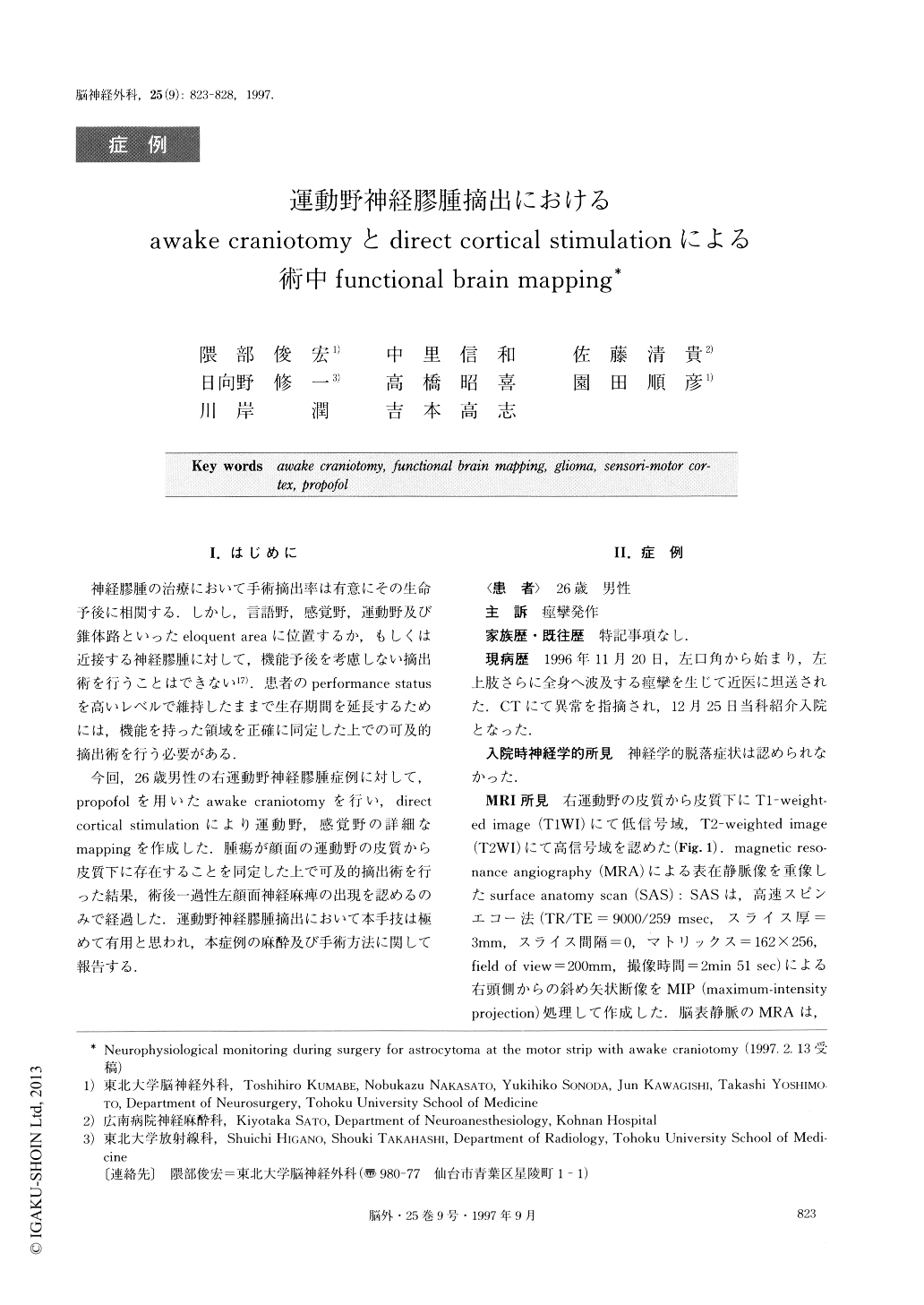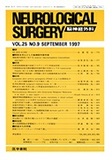Japanese
English
- 有料閲覧
- Abstract 文献概要
- 1ページ目 Look Inside
I.はじめに
神経膠腫の治療において手術摘出率は有意にその生命予後に相関する.しかし,言語野,感覚野,運動野及び錐体路といったeloquent areaに位置するか,もしくは近接する神経膠腫に対して,機能予後を考慮しない摘出術を行うことはできない17).患者のperformance statusを高いレベルで維持したままで生存期間を延長するためには,機能を持った領域を正確に同定した上での可及的摘出術を行う必要がある.
今回,26歳男性の右運動野神経膠腫症例に対して,propofolを用いたawake craniotomyを行い,directcortical stimulationにより運動野,感覚野の詳細なmappingを作成した上腫瘍が顔面の運動野の皮質から皮質下に存在することを同定した上で可及的摘出術を行った結果,術後一過性左顔面神経麻痺の出現を認めるのみで経過した.運動野神経膠腫摘出において本手技は極めて有用と思われ,本症例の麻酔及び手術方法に関して報告する.
We present a case of a 26-year-old male with fibril-lary astrocytoma at the right face motor cortex.Surgery was performed with the patient under propofol anesthesia. Stimulation mapping techniques for localiza-tion of the motor and sensory cortex were applied. The entire right face motor cortex was resected up to the hand region, resulting in a gross total removal of the tumor. Postoperatively, the patient only had transient weakness of the left lower face.
For improving the prognosis of gliomas around the motor strip, it is necessary to resect the tumor as much as possible while preserving motor function. Preopera-tive understanding of the anatomical relationship be-tween the tumor and the motor strip, and intraoprative neurophysiological monitoring may be necessary. In order to simulate the operative fieled preoperatively, we superimposed the superficial venous image obtained by magnetic resonance angiography (MRA) upon the surface anatomy scan (SAS). Magnetoencephalography (MEG) provided precise localization of the central sul-cus, preoperatively. The methods of direct cortical sti-mulation to localize sensorimotor pathways with awake craniotomy enabled us to resect the tumor maximally and to minimize morbidity.

Copyright © 1997, Igaku-Shoin Ltd. All rights reserved.


